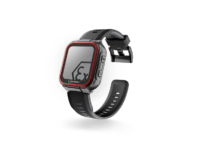The Untethered Worker: Intrinsically Safe Smartwatch Apps That Boost Productivity and Compliance

In hazardous environments—such as oil and gas refineries, chemical manufacturing plants, mining operations, or pharmaceutical facilities—technology adoption faces a non-negotiable barrier: safety certification. Traditional smartphones and even most consumer-grade smartwatches are strictly forbidden in these areas because their circuitry could produce a spark capable of igniting flammable gases, dusts, or vapors. This constraint has historically forced workers to rely on paper forms, manual checks, and verbal communication, significantly hindering efficiency and real-time compliance tracking. However, the emergence of intrinsically safe smartwatches and their specialized applications is rapidly changing this landscape. These devices, certified to operate safely in explosive atmospheres, are now empowering frontline workers with critical, real-time data, fundamentally boosting productivity and ensuring seamless regulatory compliance.
An Intrinsically Safe Smart Watch – Explosion Proof Watch is designed such that it is incapable of releasing sufficient electrical or thermal energy under normal or abnormal conditions to cause ignition. This certification is granted by organizations like ATEX, IECEx, or UL. By leveraging these certified wearables, businesses can introduce the efficiency of mobile computing directly to the operational front line, turning previously manual tasks into automated, trackable, and safe digital processes. This transition represents a major leap forward for worker safety and operational intelligence in industries where risk is a daily reality.
The Productivity Revolution: Real-Time Data and Workflow
The most immediate benefit of deploying intrinsically safe smartwatches is the dramatic boost to worker productivity, primarily through the delivery of real-time data and optimized workflows. When a worker has immediate access to critical information on their wrist, they eliminate the need to leave the hazardous zone to consult a computer or check a binder.
One key application is digital checklist and work order management. Instead of carrying cumbersome clipboards, technicians receive their daily tasks directly on the smartwatch screen. They can complete checklists, record inspection data, and confirm task completion using voice commands or simple taps, all hands-free. This instant data capture eliminates transcription errors and immediately updates the central maintenance system (CMMS), ensuring that management has an accurate, minute-by-minute status of all field operations. Furthermore, integrating the smartwatch with sensor data provides proactive maintenance capabilities. A worker can receive an alert on their wrist indicating that a nearby pump is vibrating outside its tolerance limits, allowing them to initiate a maintenance check before a catastrophic failure occurs. This shift from reactive to predictive maintenance significantly reduces unplanned downtime and increases asset uptime.
Enhanced Communication and Hands-Free Operation
The ability to communicate clearly and efficiently in noisy, hazardous environments is a frequent operational challenge. The smartwatch addresses this by enabling seamless, hands-free communication that bypasses the limitations of traditional radios or forbidden smartphones.
Apps on the intrinsically safe watch can utilize push-to-talk (PTT) functionality, turning the device into a wearable walkie-talkie. This allows for direct, real-time voice communication with supervisors or team members without requiring the worker to remove gloves or stop a delicate task. Furthermore, the watch display can be used for critical message alerts and acknowledgments. A supervisor can send a safety bulletin or an emergency evacuation notice, and the worker can instantly acknowledge receipt with a tap. This ensures vital information is delivered and confirmed, improving command and control during incidents. The hands-free nature of the device is paramount, allowing workers to maintain situational awareness and grip tools or safety rails, which is impossible when fumbling with a handheld device.
The Future of the Industrial Wearable Ecosystem
The current generation of intrinsically safe smartwatch applications represents just the beginning of their potential in industrial settings. As the technology evolves, we can anticipate deeper integrations that will further blur the line between worker and data system.
Future apps will likely incorporate augmented reality (AR) instructions displayed on smart glasses linked to the watch, providing workers with step-by-step repair guides overlaid on the actual machinery they are servicing. They will also feature advanced biometric monitoring to track worker fatigue, stress levels, and exposure to heat, providing predictive warnings to prevent human error and heat exhaustion. The key takeaway for industry leaders is that these devices are not replacing human intelligence; they are augmenting it. They act as a safe, continuous interface between the worker’s skills and the vast operational data of the plant, turning every frontline employee into a mobile, real-time data node. This continuous feedback loop is essential for maximizing efficiency and creating an unprecedented standard of operational safety and regulatory compliance in high-risk zones. The intrinsically safe smartwatch is truly the future of the connected, untethered industrial workforce.






